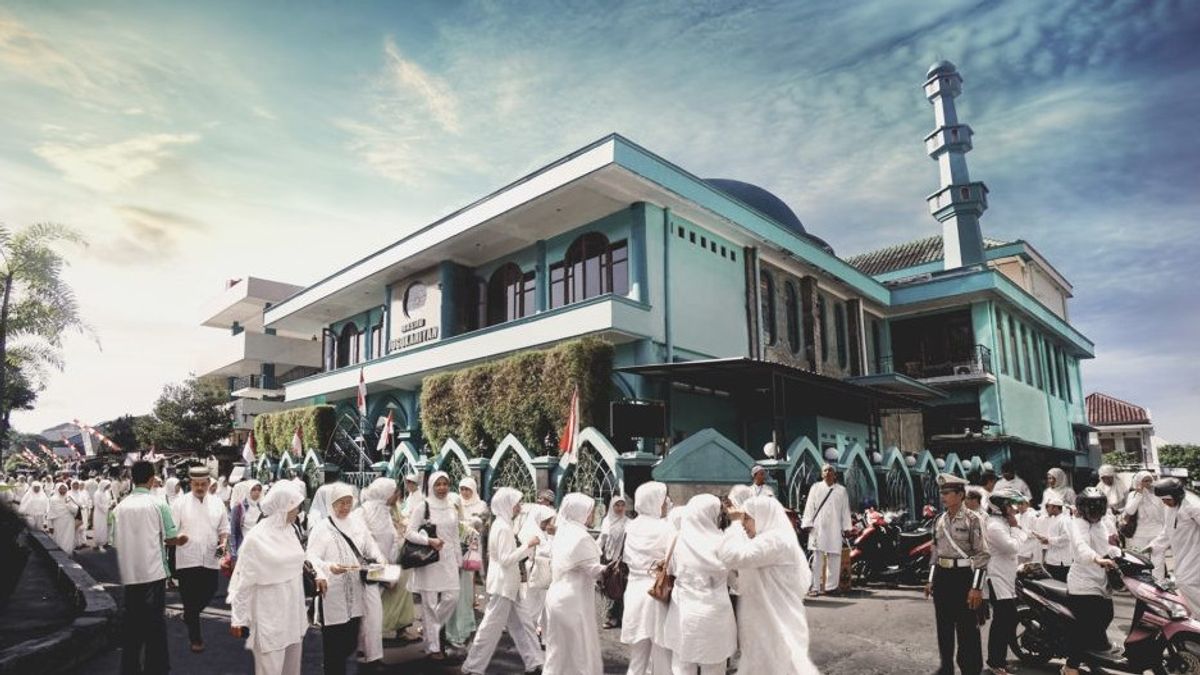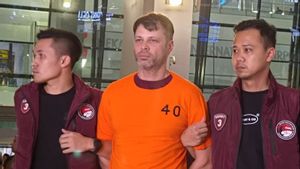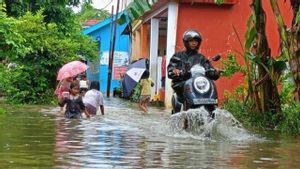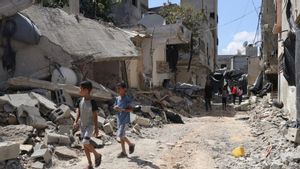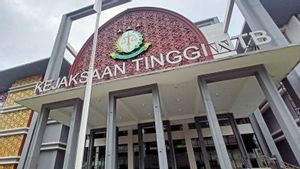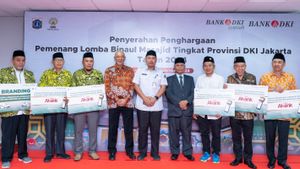JAKARTA - Jogokariyan Mosque is a historical mosque. Apart from being a place of worship, the Jogokariyan Mosque is also one of the centers of Muslim civilization in the land of Yogyakarta. The mosque, which was built in 1966, is even considered a marker of the expansion of Islam in the City of Gudeg.
However, long before that, the village where the mosque was built was inhabited by the abangan. They perpetuate the Javanese tradition rather than Islamic culture. Moreover, this village was the basis of the Indonesian Communist Party (PKI).
The beginning of the establishment of Kampung Jogokariyan was inseparable from the role of Sri Sultan Hamengkubuwono IV (1814-1822). The ruler of Yogyakarta felt that the population of court servants and soldiers from the “Jogokaryo” unit in the area within the Ngayogyakarta Hadinigrat Palace fortress was too large.
This desire is increasing, because the Palace has begun to reform the role of soldiers, who were originally war soldiers, to become ceremonial soldiers. From 750 people, it was cut to 75 people.
As a result, all the courtiers and soldiers who came from the abangan circle began to be free of duty. By the power of Hamekubuwono IV, those who were no longer in the palace complex, opened a new village north of Panggung Krapyak. The village then became known - as the name of the Jogokariyo warrior unit - Kampung Jogokariyan.
"The location of the Jogokariyan village according to the toponymy of the Javanese Land Village in Yogyakarta City has come from the Sanskrit language, namely 'Jogo' which means guarding while 'Karyan' means task or work. This area of the village is located in Njobo Beteng or outside the Royal complex which is bordered by a fortress, "said Ahmad M. Arrozi in the Sociological Analysis journal entitled Social Change of the Jogokariyan Village Mosque Community in Yogyakarta Sociology-History Review (2016).
"The banners of the Jogokaryo flag are in the shape of a papasan with a red rectangle and a green circle in the middle. The philosophical meaning of the papasan is as a brave force capable of destroying enemies with determination, "he added.
From abangans to communist sympathizersEven though the village had been created, the lives of the former Abdi Dalam and Jogokaryo soldiers were not immediately covered by the establishment. After leaving the Ngayogyakarta Palace they no longer received a salary.
As a sign of their dedication to the kingdom, they were only given land or what the Dutch called "land of wages." The land of the lunggung was distributed by the King of Yogyakarta to the soldiers and Abdi Dalam for a certain duration.
Pure land is not determined based on hectares or acres, but is determined by the number of inhabitants (count). Historian Ong Hok Ham explained that one chunk was the same as a farmer unit consisting of four men.
As a result, the financial position and political level of high-ranking officials were assessed by the number of census they received from the king. High officials can use chopping power for various purposes, from personal to royal interests.
“So, for example, a royal official or a prince receives a land area of 800 cacah (peasant family). Which means that he received land large enough to be cultivated by 800 farming families or large enough so that 800 farming families could work on it. In short, the wealth and prosperity of the members of the Javanese elite were measured by population and not by land area. It is not control of the territory, but control of the population that is considered important by the elite, "said Ong Hok Ham in the book Dua Abad Pengadaan Tanah (1984).
However, the Abdi Dalem and soldiers were not elite class officials. They do not get real land with sufficient chopping power. Few can adjust.
Not a few of them are unable to adjust. Alias stuck in a puddle of poverty. As a result, they chose to sell real land. Also, the land for the Batik and Tenun entrepreneurs in other areas of Yogyakarta. In line with that, the socio-economic changes in Jogokariyan Village began to change.

Jogokariyan Mosque (Source: masjidjogokariyan.com)
The initial image of the Jogokariyan village, which was dominated by Abdi Dalam and soldiers, began to turn into a batik and weaving village. quoted from Adi Nur Ahmad in his research Mosque Building the People: History of the Jogokariyan Mosque in Yogyakarta 1980-2013 (2017), mentions that many generations of the descendants of Abdi Dalem were forced to work as laborers in batik and weaving factories.
This dynamic shows that the immigrants are more prosperous than the indigenous population, namely the Abdi Dalem generation. The PKI then exploited this gap to echo the sentiment of the working class against the employers.
The presence of the PKI was then welcomed. Thanks to that, Jogokariyan Village became one of the PKI mass bases in Yogyakarta. However, the triumph must end. The bloody event of the September 30, 1965 Movement (G30S) was a precursor to the character of the people of Jogokariyan Village changing again.
After that, Jogokariyan Village, which was originally dominated by the abangan, began to change with the domination of the santri. The establishment of the Jogokariyan mosque became the main milestone.
The students' village and the Jogokariyan Mosque
Ustaz Abdul Somad's Study at the Jogokariyan Mosque (Source: masjidjogokariyan.com)
Historically, batik and weaving craftsmen who lived in Jogokariyan Village purchased a donated land of 600 square meters. The majority of batik and cultivating entrepreneurs in the village are Masyumi sympathizers and Muhammadiyah members.
To perpetuate and develop Islam, the land was then prepared for the construction of mosques. It is recorded that September 20, 1966 was chosen as the day for the laying of the first stone of the Jogokariyan Mosque.
"This mosque was founded in August 1967 after it was inaugurated by the chairman of the Yogyakarta City Muhammadiyah Regional Leadership (PDM). Standing on an area of 600 square meters purchased by the community with the help of batik entrepreneurs who are members of the Karang Tunggal Batik Cooperative and Tri Jaya Tenun Cooperative, "Muhammad Syafril wrote in the book Berjamaah Lebih Utama (2019).
During the construction period, the Jogokariyan Mosque was transformed into a glue tool for Muslims. Especially, to make social changes within the scope of the local community. Even though from the beginning, Jogokiriyan Village was known as the communist base village. Over time that image changed. At least until today people know Jogokirian Village as a santri village.
"Currently, the Jogokariyan Mosque has transformed into an important pillar in building civil society with its socio-religious activity approach. This success continues to grow, making the Jogokariyan Mosque another destination for mosques in Indonesia to come and learn how to make mosques an important site in empowering the surrounding community, "concluded Suhairi Umar in the book Mosque-Based Community Education (2019).
* Read other information about HISTORY or read other interesting writings from Detha Arya Tifada.
MEMORY OtherThe English, Chinese, Japanese, Arabic, and French versions are automatically generated by the AI. So there may still be inaccuracies in translating, please always see Indonesian as our main language. (system supported by DigitalSiber.id)
